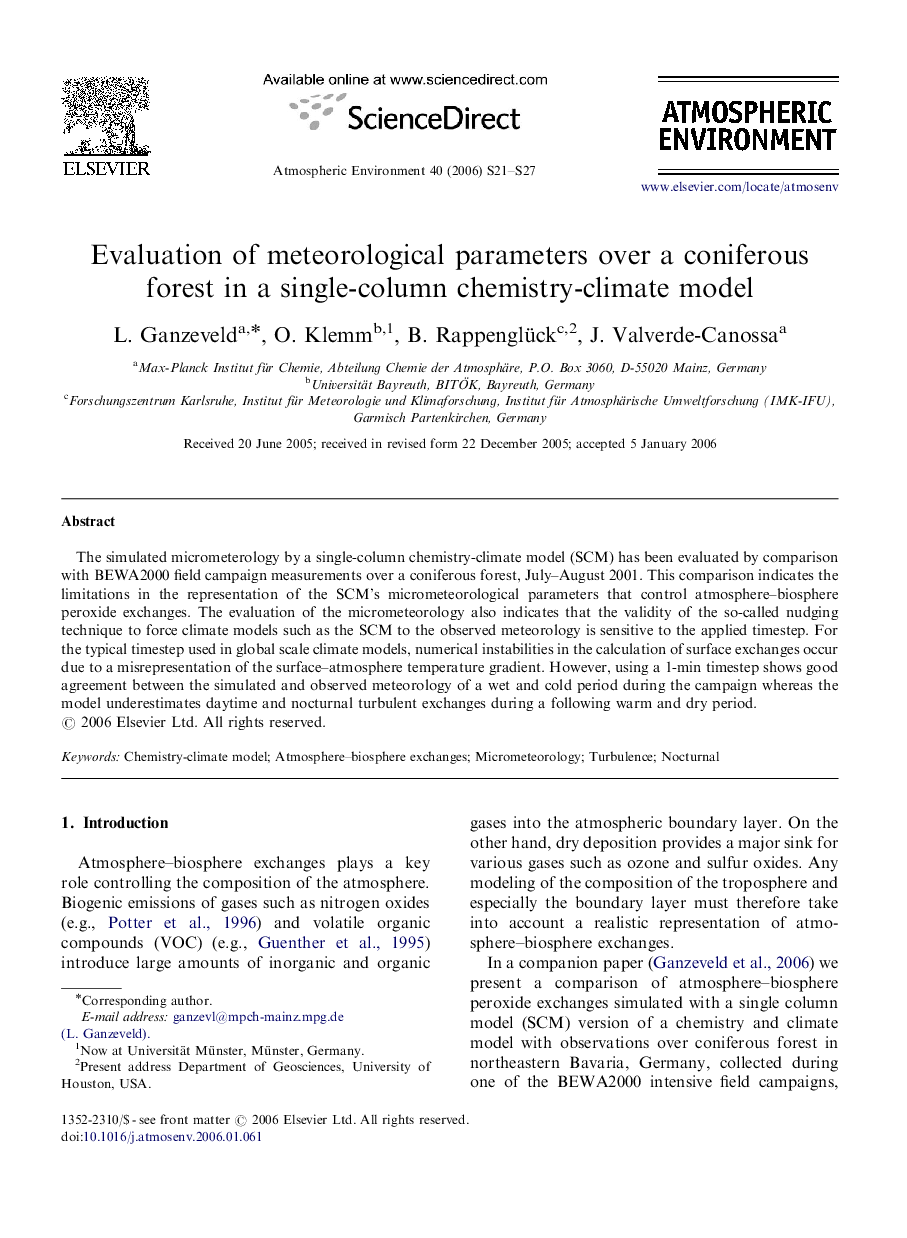| Article ID | Journal | Published Year | Pages | File Type |
|---|---|---|---|---|
| 4443888 | Atmospheric Environment | 2006 | 7 Pages |
The simulated micrometerology by a single-column chemistry-climate model (SCM) has been evaluated by comparison with BEWA2000 field campaign measurements over a coniferous forest, July–August 2001. This comparison indicates the limitations in the representation of the SCM's micrometeorological parameters that control atmosphere–biosphere peroxide exchanges. The evaluation of the micrometeorology also indicates that the validity of the so-called nudging technique to force climate models such as the SCM to the observed meteorology is sensitive to the applied timestep. For the typical timestep used in global scale climate models, numerical instabilities in the calculation of surface exchanges occur due to a misrepresentation of the surface–atmosphere temperature gradient. However, using a 1-min timestep shows good agreement between the simulated and observed meteorology of a wet and cold period during the campaign whereas the model underestimates daytime and nocturnal turbulent exchanges during a following warm and dry period.
